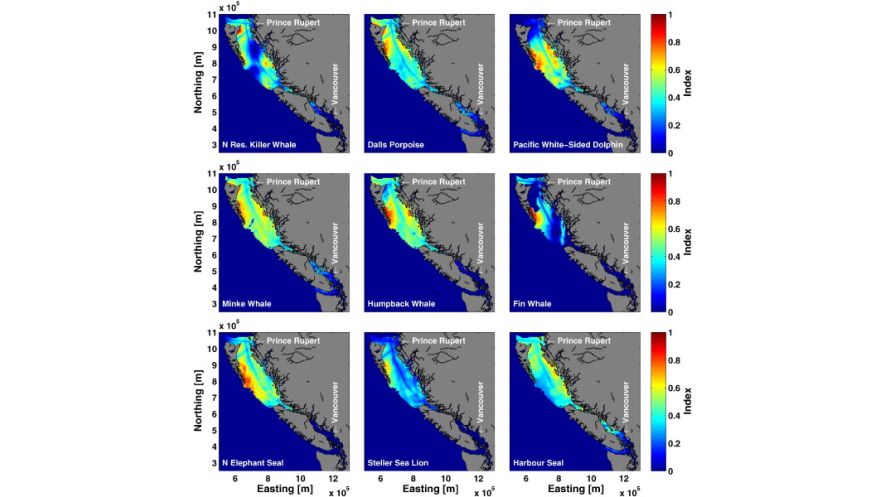Think of the noisiest corner in your town. Horns blare, trucks rumble, trains clatter. People yell to be heard over the racket, jets fly overhead, and behind all this exists the low roar of indistinct noise that can’t always be identified.
Maybe you can reroute a few of these vehicles, but city noise is persistent. What’s more, anything you reroute is just going to make noise somewhere else, maybe even somewhere that used to be quiet. In a way, the same is true in our oceans. The quietest places are those where we have yet to introduce noise, and it’s much easier to keep them that way, than to mute the volume in a place that is already loud.
In fact, according to Rob Williams, a Principal Investigator and Pew Fellow in Marine Conservation it’s much easier to keep quiet marine habitats quiet than it is to quiet a habitat that is already noisy.
In a paper entitled "Quiet(er) marine protected areas", which was recently uploaded to the Marine Pollution Bulletin, Williams and his coauthors (Christine Erbe, Erin Ashe, and Christopher W. Clark) point out that we already know man made ocean noise has the potential to harm acoustically sensitive marine organisms. We also know that area-based management can separate wildlife from ocean noise. As a result, risk assessments often identify sites where marine mammal habitat is noisy. The corollary to this, they say, is “opportunity sites” — key marine mammal habitats that are quiet.
After years about publishing about effects of anthropogenic noise on marine mammals, these authors decided to take a look at places that support high densities of wildlife, but also have low levels of ocean noise. They called these places “opportunity sites.”
They say, “working with existing patterns in ocean noise and animal distribution will facilitate conservation gains while minimizing societal costs, by identifying opportunities to protect important wildlife habitats that happen to be quiet.”
The authors write that they “do not intend to minimize the amount of work that it will take to make noisy areas quieter,” but they site previous research from other pollution-prevention exercises that found it is that “it pays to start with so-called ‘low-hanging fruit.’”
They say that while waiting for shipping noise mitigation measures to take place, “we have a time-limited period to identify important areas that are still quiet.”
For example, the authors write, “In our professional opinion, if two places are equally important to whales, with one being noisy and the other being quiet, it would be helpful to identify those areas and present that information to decision-makers. The noisy area may require mitigation, whereas the quiet area may make a more attractive or convenient candidate for critical habitat protection, either because it represents higher quality habitat to the animals or because it imposes lower economic costs to society to mitigate anthropogenic threats.”
The paper goes on to provide some methods for this approach, as well as some example results. In particular, the researchers looked at data identifying high “risk” areas (high levels of animal density and anthropogenic noise) and high “opportunity” areas (high levels of animal density and low levels of anthropogenic noise for ten marine species which differed in both spatial distribution and hearing abilities (e.g., multiple species of whales, seals, sea lions, dolphins, and porpoises).
The study's primary objective was “to integrate information on cumulative noise energies with average distributions and hearing abilities of 10 marine mammal species during summer months to assess whether some sites or species that already reside in quiet acoustic environments could benefit from formal protection.”
They concluded that based on the local sound propagation environment and the geographic locations and positions within the water column of the noise sources and of the receivers, natural acoustic focus and buffer zones exist that may ease the process of separating marine mammals from noise. In future work, they plan to “move beyond single-species management and begin to make some predictions about influences of noise on ecological communities.”
Importantly, however, the authors stress that they “do not advocate ignoring acoustically degraded sites. On the contrary, habitat restoration is a central task in conservation biology.”
However, they say, “if we fail to identify pockets where important wildlife habitats are still quiet and also manage human activities in order to keep them that way, we can expect those acoustic sanctuaries or refugia to disappear eventually.”
To read the original paper, click here.



